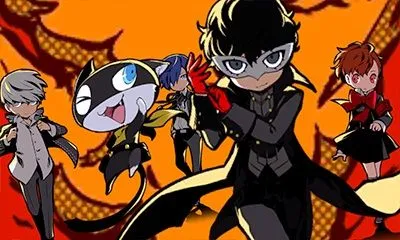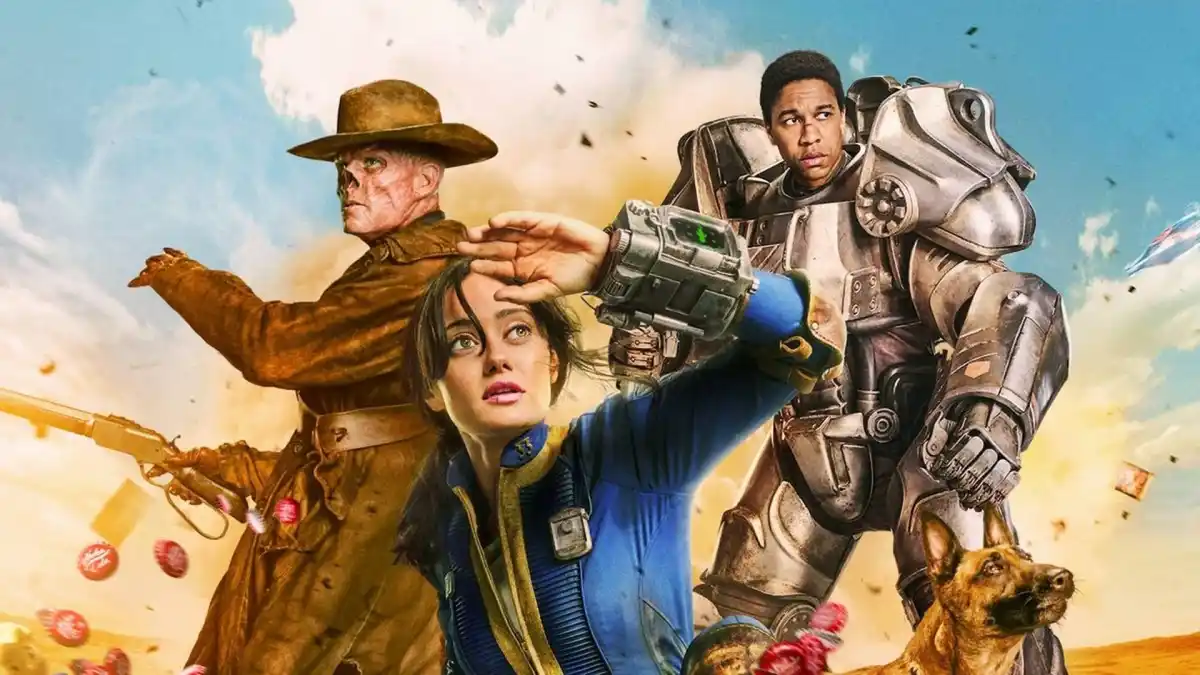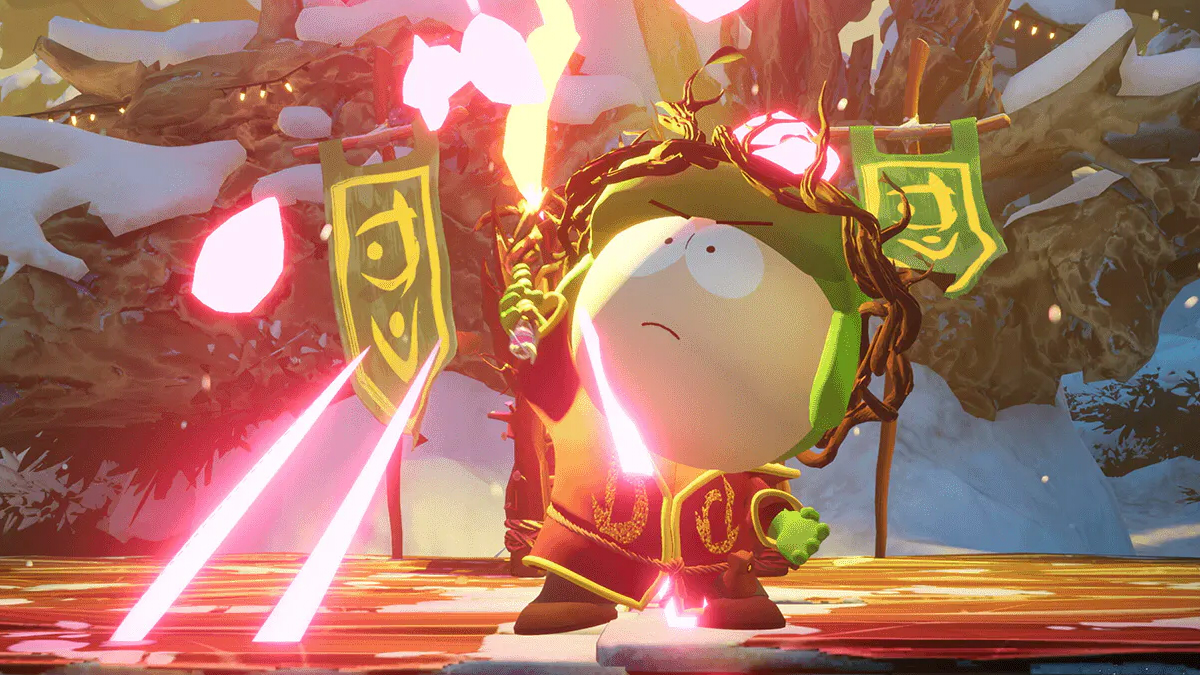Persona Q2: New Cinema Labyrinth on 3DS
Persona Q2: New Cinema Labyrinth comes at an inopportune time for most 3DS owners who want to finally pack up the old handheld and fully move on to the Switch. If you’re in that camp, then I have some bad news for you. Persona Q2 is a beautifully composed swansong for the beloved Nintendo handheld.
This game is the second in a series of Persona spinoffs for the 3DS. The Persona Q games focus on bringing together characters from multiple main series games. The battle systems and Persona collecting are the same as you would expect from the JRPG series. The biggest difference is in the Etrian Odyssey-inspired dungeon crawling and map creation.
Persona Q2 follows the story of a young white-haired film enthusiast named Hikari , with Joker taking center stage as our main protagonist. She finds herself trapped in a movie theater with the caring curator Nagi, the mysterious projectionist Doe, and eventually the cast of playable characters from Personas 3 through 5. This includes the P3 Portable protagonist who was not present in the first Persona Q.
The themes of submitting to the majority and blending in with the crowd are spun through each film. It’s clear that Hikari has problems with thinking for herself. Her obsession with film is the only way she can escape from the pressures of life. Her connection to Doe and Nagi become clear late in the game, but some of the twists are predictable. On the other hand, there’s also a twist that I was absolutely not expecting. It was a heartwarming moment for Hikari and stood out as one of the best story beats in the game.
Doe and Nagi are the mysterious inhabitants of the theater who were there before or right around the same time as Hikari. Nagi takes on the role of a motherly figure for Hikari throughout the game. Nagi’s character doesn’t grow too much past this maternal presence, but the reason for this becomes clear during the fairly late into the game. Overall, she delivers on what the story needed her to be as a character despite a lack of development early on.
Doe is the dark and mysterious projectionist that suddenly appeared in the theater around the same time as Hikari. He resembles a shadow with a dark featureless body, a blue tie, and a golden mask. Little is revealed about him until very late into the game, and he remains a shallow character throughout much of the story. He seems to only exist to play movies for Hikari and vomit keys once a film has been completed, which is a shame.
Everyone is brought to the theater by some unknown force and the only way to escape is to collect the keys to open the locks on the theater doors. The keys are obtained by entering and changing the endings of the films showing in the cinema. Most of the movies extol the virtues of following the pack and not thinking for yourself. Hikari is typically unsure of letting the Persona characters change the endings, but she always comes around to the idea by the end.
The previous Persona Q was a bit infamous for dungeons that dragged on too long but luckily there was just one in Persona Q2 suffered from this. The fourth film has the most maps in the game and one of the most convoluted methods for navigation. You have to get creative when marking the map, and this is where custom notes come in handy. It’s a bit of a slog, but the dungeon is propped up by the fact that Hikari’s character building ramps up in this film.
It’s a long dungeon, but I’m glad they took that time to build more of a backstory for Hikari, as she’s the most relatable of all the new characters. It was incredibly smart of them to use all that extra time to create more interest in her. I would have liked to get more depth earlier on, but there’s even a story reason why this couldn’t be done that’s revealed in the final dungeon. The early lack of development is no issue thanks to the amount of character growth that happens near the end of the game.
Each film is a self-contained world filled with shadows and familiar characters. There are a few films that are quite clearly focused on the characters of one Persona game. The first film takes place in a city where Kamoshida is an autocratic Superman. Just like the palaces in Persona 5, these aren’t the actual people. The film is just linked to the Phantom Thieves, so it places Kamoshida in the role of an important character.
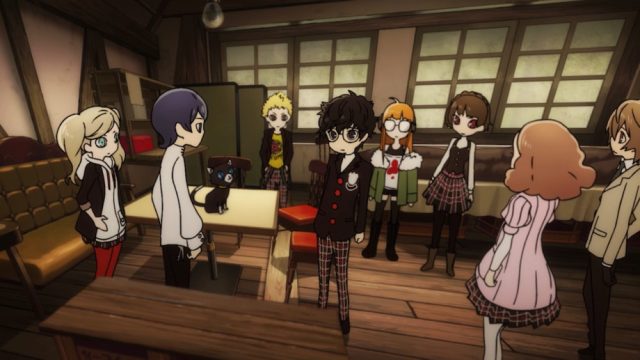
It’s fun to see characters you know in completely new roles and situations, but the story doesn’t grip you like the mainline games. The stakes in these movie worlds just don’t feel as high as they do in the real world you play through in other Persona titles. That’s to be expected with spinoffs since nothing too drastic is usually allowed to happen.
It’s an easy enough story to follow, but it isn’t anything worth getting wrapped up in. The story just feels like it pulls too many punches early on, something which Persona is absolutely not known for. As you continue through the game it begins to take a darker turn. Even in one of the most colorful and upbeat films you get a horrifyingly dark and depressing story told through the eyes of Hikari.
The rest of the story features Hikari, but the Investigation Squad, SEES, and the Phantom Thieves get the most screen time through the first half of the game. It almost makes you forget that there are new characters in the game. The Persona user stories are good enough. They’re not anything spectacular, but they have a good mix of intensity and levity.
Luckily, the interactions that you get between characters from past Persona games are the saving grace here. There are fun interactions between incredibly similar characters like the brutes Shinji and Ryuji. However, some of the best scenes take place when complete opposites team up like the extremely girly model Ann and the athletic carnivore Chie.
These interactions are all we get since there are no social links in Persona Q2. At first, I was a bit disappointed by this fact, but it’s probably better that way when you consider the size of the roster. I can’t imagine trying to max out friendships with over 25 different characters.
One of the strong points that all Persona games share is their character building. Since past titles have already built up who these people are, we don’t get much character development except for the new character, Hikari. Even then, she doesn’t really feel all that developed until the last two films. Yet, since the game is a spinoff it’s easy to excuse the lack of character building.
Persona Q2 has a star-studded lineup, but also far too many characters. With a massive cast of 28 playable characters, it’s too daunting of a task to keep them all adequately leveled. There are certainly ways to do it, but by the time every character joins the party, you’ll have a minimum of 21 characters sitting on the sidelines each time you jump into a movie.
The worst part of the massive roster is that you can’t even switch characters when you’re in the middle of a dungeon. You need to completely back out, then go to the party menu to edit your lineup. They made what should be a simple couple button presses a painfully tedious chore. This also adds to the difficulty of leveling everyone equally since it’s such a time sink.
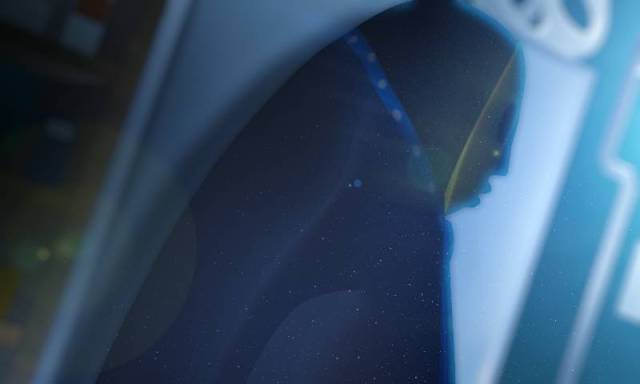
The map building in Persona Q2 is another system that I had anticipated to be a drag. At the start of the game Hikari gives you a notebook to draw maps. The story excuse is that Futaba and other navigators can’t use their powers in the films. It’s a bit convenient but better than leaving it completely unexplained.
The mapping in this game is much improved from Persona Q. In the previous title you had to draw out each individual floor tile, wall, and obstacle. Now, as you walk it will fill in the floors and walls for you. This is not only much more convenient but it also makes it easier to keep track of where you have already walked. That’s a huge asset if you’re planning on exploring 100% of each map.
I was pleasantly surprised once I got into the thick of map creation. Again, the fact that it automatically maps the floor and walls for you as you walk is massively convenient. All you need to do is place icons for shortcuts, treasure chests, and whatever else you want to mark. If the tools you’ve been given don’t work for a certain landmark you want to map, you can even place custom notes.
There are also oppressively powerful enemies that act as physical barriers to your progression. They’re known as FOEs (it’s an acronym). These hulking enemies add a thrilling component to map making. If your lower screen isn’t filled in properly, then you might end up having some issues escaping these FOEs.
Assembling a map on the 3DS touchscreen doesn’t sound like an enjoyable task. The screen is good compared to most resistive touchscreens, but it’s still quite small. Somehow Atlus not only made it work, but they made it fun. The toolset is perfect, and you never feel like something you need is missing. The quick access menu makes it even easier to use the tools you assign to it.
Art styles in Persona titles don’t differ too much from one iteration to the next, but it’s still impressive to see characters from multiple games work so well together. Having them all together under one chibi style certainly helps.
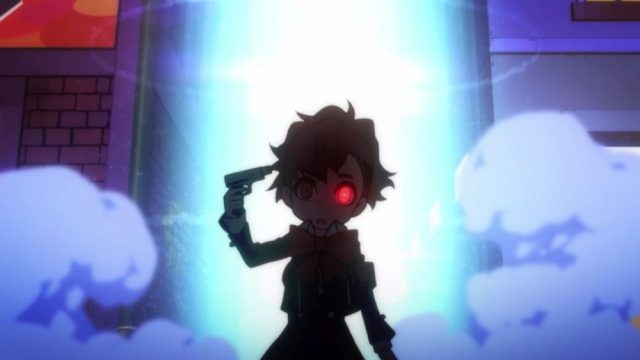
Besides the chibi characters, Persona Q2 borrows from Persona 5 in the overarching style of menus and UI. It may seem like just shapes, words, and colors, but the UI just drips with style. It’s not on the same level as Persona 5, but it’s as darn good as the 3DS can do with limited screen real estate.
The Personas are the only characters that stand out in this game since they retained their original art. They look like dark and gritty highly detailed 2D drawings. I can understand why they didn’t remake every Persona in a chibi style, but it’s still a bit disappointing. A chibi Arsene would have been so cute with rounded corners instead of sharp and pointy edges.
Conversely, it’s fantastic that they left battling alone. Persona Q2’s battle system made me remember why I love the Persona series. To be fair, I first fell in love with the Shin Megami Tensei battle system, but you get the idea. If you’ve ever played a Persona game before then you know exactly what I mean.
If you’re new to the series, each new battle is a race of sorts to figure out your enemy’s weaknesses before they find yours. The basic idea hasn’t changed massively over the decades, but this is the perfect way to do a turn-based RPG. The anticipation of finding the right skill all pays off in the exhilarating feeling of blowing your opponents away with an All-Out Attack.
Most of the battle features in Persona Q2 are familiar, but Unison attacks add some enjoyable flair to fights. These Unison attacks are unlocked through side quests known as Special Screenings. When you unlock one of these powerful moves, it adds a new bit of information to a character’s stats screen that displays all the Unison attacks they can perform. Only specific characters can utilize certain Unison attacks.
These team moves let you gang up on shadows with a truly devastating attack. Their impressive strength makes you feel ridiculously powerful. Also, activating a Unison attack initiates a short cutscene that displays the characters assigned to that move launching a synchronized assault on the enemy. These attacks activate randomly, but it’s better that way. They’re too powerful to not be tied to RNG.
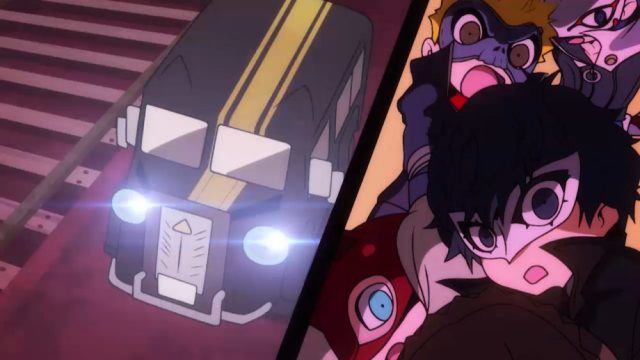
There’s no doubt that the number of characters in Persona Q2 is a problem. Yet, they figured out a way to still make Unison attacks easily usable. If one character involved in the move is in your party, then it can activate. It’s great because these attacks are unabashed fanservice of the best kind and that’s part of what makes them so enjoyable.
The only next best thing are the often hilarious, sometimes absurd conversations you have with shadows. Sadly, there are no negotiations with shadows in this game. I know many Persona fans don’t care much for negotiations, but it at least lets you target a specific Persona instead of just hoping you’ll randomly get the one you need by defeating a rare enemy.
Overall, the gameplay loop is enough to keep you enthralled throughout the full 45 to 50 hour-long story. You jump into a film, battle enemies, collect materials to get new shop items, then return to the theater to rest up and do it all again. The repetition of slowly chipping away at each film can sometimes get to you.
Then once you think you’re about to get bored with a given world, the challenge of the battle system and the full customization of the map creation pulls you back in. Another key to Persona Q2 combating boredom is by introducing new shadows multiple times per movie, despite a few reskins. However, it’s easy to overlook reskinned enemies when their weaknesses change so drastically.
The 3DS may be aging and leaving us shortly, but you would be remiss to skip on Persona Q2. It’s a little rough around the edges despite the beautiful roundness of the chibi style. The story and character building that we’ve come to expect from the Persona franchise is all but missing. Yet, battling and Persona collecting is still just as fun as it has always been — despite the lack of negotiations.
Even if you’ve never played a game in this series, Persona Q2 is still a great RPG. It makes references here and there to the main titles without getting too deep into spoilers. Of course, fans of the Persona franchise will also love this game. It’s essentially an abridged version of the standard Persona experience. Get that 3DS charger ready, because you have one more wonderful game to finish.
Score: 4/5 – Great
For more information on how we review games, check out Twinfinite’s review policy here.

